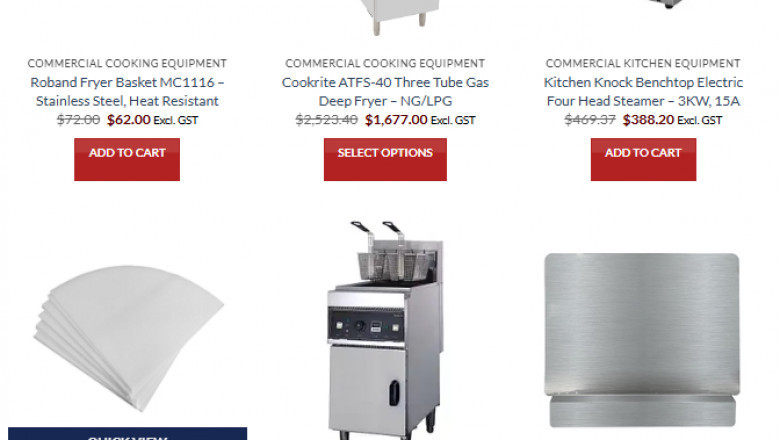views
Selecting the right energy source for commercial kitchen cooking equipment is a critical decision that affects efficiency, operating costs, and overall kitchen performance. Gas and electric cooking equipment each offer distinct advantages and limitations, making it essential for restaurant owners to assess their specific needs before making an investment.
Efficiency and Performance
Gas-powered cooking equipment is widely favoured in professional kitchens due to its immediate heat output and precise temperature control. Gas burners allow chefs to adjust heat levels instantly, making them ideal for fast-paced environments where rapid temperature changes are necessary. Additionally, gas ovens tend to distribute heat more evenly, which is beneficial for baking and roasting.
Electric cooking equipment, on the other hand, provides consistent and even heating. Electric ovens and induction cooktops maintain stable temperatures, reducing the risk of temperature fluctuations that can affect food quality. While electric burners may take longer to reach the desired temperature, they retain heat efficiently, ensuring uniform cooking results.
Installation and Infrastructure
The choice between gas and electric commercial cooking equipment is often influenced by the existing infrastructure of a kitchen. Gas equipment requires a dedicated gas supply, proper ventilation, and compliance with safety regulations. Installing a gas line may involve additional costs if the kitchen is not already equipped with one.
Electric equipment, by contrast, is easier to install, provided the kitchen has sufficient electrical capacity. It does not require ventilation systems to manage combustion gases, making it a viable option for locations where gas access is limited. However, high-powered electric appliances may demand significant electrical upgrades, which can increase initial setup costs.
Operating Costs and Energy Consumption
Energy efficiency is a key factor when comparing gas and electric equipment. Gas appliances generally have lower energy costs since natural gas tends to be more affordable than electricity in many regions. This makes gas cooking equipment a cost-effective option for high-volume kitchens that require prolonged usage.
Electric cooking equipment, particularly induction technology, is more energy-efficient in terms of heat transfer. Induction cooktops, for example, generate heat directly in the cookware, reducing energy wastage. While electricity rates may be higher than gas, some modern electric appliances are designed with energy-saving features that can help offset operational costs over time.
Safety Considerations
Safety is a primary concern in any commercial kitchen. Gas equipment requires proper ventilation to prevent the accumulation of carbon monoxide and other combustion by-products. Gas leaks pose a risk of fire or explosion, necessitating regular maintenance and safety inspections.
Electric appliances eliminate the risk of gas leaks, making them a safer option in certain environments. Induction cooktops, in particular, remain cool to the touch when not in contact with cookware, reducing the likelihood of burns and fire hazards. However, electric appliances must be handled correctly to avoid electrical hazards and ensure compliance with industry regulations.
Maintenance and Durability
Routine maintenance is essential to prolong the lifespan of both gas and electric commercial kitchen cooking equipment. Gas appliances require regular inspections of burners, gas lines, and ventilation systems to ensure optimal performance. Carbon build-up and clogged burners can affect efficiency and safety if not addressed promptly.
Electric equipment typically requires less maintenance since there are fewer components prone to wear and tear. Induction cooktops, for example, have smooth surfaces that are easier to clean compared to traditional gas burners. However, electric components such as heating elements and control panels may need periodic servicing or replacement.
Environmental Impact
Sustainability is an increasingly important consideration in the food service industry. Gas cooking equipment produces greenhouse gas emissions, contributing to environmental concerns. As regulations on emissions tighten, some establishments are shifting towards electric alternatives to reduce their carbon footprint.
Electric cooking equipment, particularly when powered by renewable energy sources, offers a more environmentally friendly option. Induction technology further minimises energy waste, aligning with the growing demand for energy-efficient and sustainable restaurant equipment.






















Comments
0 comment